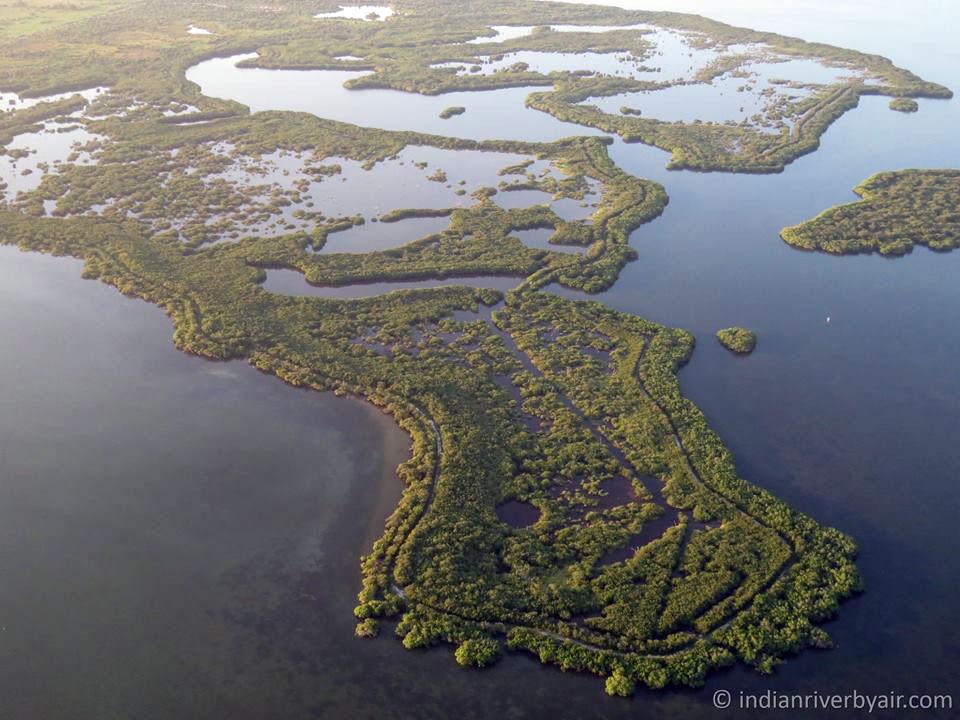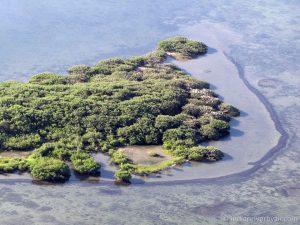Fertilizer Ordinances in the Indian River Lagoon Watershed

All of the IRL watershed counties and their cities are working together to improve the water quality of the Lagoon. This watershed-wide movement to adopt and use the strong fertilizer ordinance to reduce nutrient pollution is a remarkable grassroots achievement. Sending rainwater to the Lagoon keeps our communities from flooding. For this privilege, our mission must be to keep that runoff as clean as possible. We must do no harm. We must save the IRL.
Summary
A consensus is finalizing among the governments in the IRL watershed. The counties of Volusia, Brevard, Indian River, St. Lucie, and Martin, along with 40 of their 44 incorporated municipalities, have adopted strong fertilizer ordinances. There are minor differences among the many ordinances, principally in how big to make the fertilizer-free zone and certain exemptions. They now all have ordinances with these common features:
 All commercial fertilizer applicators within the incorporated and unincorporated areas of the counties must complete special training. They shall abide by and successfully complete the six-hour training program outlined in the Florida-friendly Best Management Practices for Protection of Water Resources by the Green Industries offered by the FDEP through the UF Extension “Florida-Friendly Landscaping” program, or an approved equivalent.
All commercial fertilizer applicators within the incorporated and unincorporated areas of the counties must complete special training. They shall abide by and successfully complete the six-hour training program outlined in the Florida-friendly Best Management Practices for Protection of Water Resources by the Green Industries offered by the FDEP through the UF Extension “Florida-Friendly Landscaping” program, or an approved equivalent.
- Rainy season ban from June 1–September 30 for nitrogen and phosphorus fertilizer
- No phosphorus allowed without a soil test that indicates need
- Use only fertilizer with total nitrogen content of at least 50% slow release
- Fertilizer-free zone, at a minimum, within 10 feet of all bodies of water, no exceptions
- Sets maximum yearly limits by grass types and application rates for fertilizer use on lawns
- Prohibits fertilizer use on new turf for 30 days
- Prohibits leaving grass clippings and fertilizer on any impervious surface (concrete or pavement)
- Prohibits fertilizing on days when a heavy rain is expected, if the ground is water saturated, or during a flood watch, tropical storm, or hurricane watch or warning
- Establishes a voluntary low maintenance zone within 10 feet of all water bodies
- Exempts bona fide farm operations
- Requires professionals and institutional applicators to have training
- Establishes penalties for non compliance
Municipal Jurisdictions of Brevard
Cape Canaveral | Cocoa | Cocoa Beach | Grant-Valkaria | Indialantic | Indian Harbor Beach | Malabar | Melbourne | Melbourne Beach | Melbourne Village | Palm Bay | Palm Shores | Rockledge | Satellite Beach | Titusville | West Melbourne
If you don’t live in one of the above cities or towns, you live in Unincorporated Brevard County.
What’s Legal in Brevard County
The County and all of its 16 municipalities have adopted the strong version of the fertilizer ordinance.
- Cape Canaveral (9,912) Chapter 92
- Cocoa (17,140) Ordinance No. 11 – 2014
- Cocoa Beach (11, 260) Ord. No. 1576, §1, 1-16-2014
- Grant-Valkaria (3,890) Ordinance No. 2014 – 01 25′ fertilizer free zone along IRL
- Indialantic (2,720) Ordinance No. 14-09 25′ fertilizer free zone from all water bodies
- Indian Harbor Beach (8,249) Appendix B, Chapter 107, Sec. 107-21 25′ fertilizer free zone from all water bodies
- Malabar (2,785) Ordinance No. 14-04, §1, 4-7-14
- Melbourne (77,048) Sec 50 – 109
- Melbourne Beach (3,101) Ordinance No. 2013-09, §2(27-62), 3-26-2013
- Melbourne Village (665) Ordinance No. 2013-04 Chapter 21-5
- Palm Bay (104,124) Ordinance No. 2014-16
- Palm Shores (900) Ordinance 2014 – 5, Ord. No. O-5-18, §1, 8-20-18 No nitrogen within 25′ of the IRL
- Rockledge (24,926) Bans all fertilizer east of Rockledge Drive.
- Satellite Beach (10,109) Ordinance No. 1074, §1, 11-6-13
- Titusville (43,761) Ordinance No. 36-2013 25′ fertilizer free zone along IRL
- Unincorporated Brevard County (206,664) Chapter 46, Article VIII 15′ fertilizer free zone
- West Melbourne (19,164) Ordinance No. 2014-15, §1, 5-20-2014
What’s Legal in Indian River County
The County and four of its five municipalities have adopted the strong version of the fertilizer ordinance.
- Unincorporated Indian River County (108,529) Ordinance No. 2013 – 014
- Vero Beach (15,220) Ordinance No. 2012-01, § 2, 1-3-2012
- Indian River Shores (3,967) Ordinance No. 513
- Orchid (421) Ordinance No. 2013-01, § 2, 9-5-2013
- Sebastian (22,364) Ordinance No. 0 – 14 – 2
- Fellsmere (5,286) Model Ordinance
What’s Legal in Martin County
The County and three of its four municipalities have committed to the strong version of the fertilizer ordinance.
- Unincorporated Martin County (130,004) Sec. 67.434.
- Sewall’s Point (2,041) Article VII – Fertilizer Note: No fertilizer June 1–November 30
- Stuart (15,581) Ordinance No. 2280-2014 Note: Allows low P
- Ocean Breeze Park (354) Ordinance 209 – 2014. For a copy, email: townofoceanbreez@bellsouth.net
- Town of Jupiter Island (837) Model Ordinance
What’s Legal in Miami-Dade County
Miami-Dade County has adopted the strong version of the fertilizer ordinance. Ordinance No. 21-26 supercedes the other ordinances around the county, including City of Miami Beach. Read about how this ordinance can help protect the Biscayne Bay ecosystem.
- Miami-Dade County Ordinance No. 21-26
What’s Legal in St. Lucie County
The County and all three of its municipalities have adopted the strong version of the fertilizer ordinance.
- Unincorporated St. Lucie County (65,851) Ordinance No. 2014 – 3
- Port St Lucie (168,7160) Ordinance 14 – 10
- St. Lucie Village (597) Ordinance 2014 – 2
- Ft. Pierce (42,465) Ordinance 14 – 014
What’s Legal in Volusia County
The County and 15 of the 16 of incorporated municipalities are now regulated by the strong version of the fertilizer ordinance. Only Deltona (86,290) follows the minimum “state model.”
Volusia County (496,950) Ordinance 2014 – 06, Amendment: Ordinance 2014 – 09

